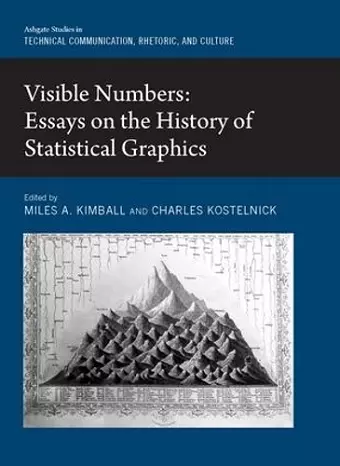Visible Numbers
Essays on the History of Statistical Graphics
Charles Kostelnick editor Miles A Kimball editor
Format:Hardback
Publisher:Taylor & Francis Ltd
Published:15th Dec '15
Currently unavailable, and unfortunately no date known when it will be back
This hardback is available in another edition too:
- Paperback£48.99(9780815386506)

Bringing together scholars from around the world, this collection examines many of the historical developments in making data visible through charts, graphs, thematic maps, and now interactive displays. Today, we are used to seeing data portrayed in a dizzying array of graphic forms. Virtually any quantified knowledge, from social and physical science to engineering and medicine, as well as business, government, or personal activity, has been visualized. Yet the methods of making data visible are relatively new innovations, most stemming from eighteenth- and nineteenth-century innovations that arose as a logical response to a growing desire to quantify everything-from science, economics, and industry to population, health, and crime. Innovators such as Playfair, Alexander von Humboldt, Heinrich Berghaus, John Snow, Florence Nightingale, Francis Galton, and Charles Minard began to develop graphical methods to make data and their relations more visible. In the twentieth century, data design became both increasingly specialized within new and existing disciplines-science, engineering, social science, and medicine-and at the same time became further democratized, with new forms that make statistical, business, and government data more accessible to the public. At the close of the twentieth century and the beginning of the twenty-first, an explosion in interactive digital data design has exponentially increased our access to data. The contributors analyze this fascinating history through a variety of critical approaches, including visual rhetoric, visual culture, genre theory, and fully contextualized historical scholarship.
"The present volume is a collection of ten essays on the subject, mainly written by humanities (especially English) professors. Given this fact, the focus is, as one might expect, on rhetoric and epistemology. (...) those individuals finding the perspective on the subject more in line with their own will be pleased by the 25-page annotated bibliography that is supplied, in addition to the 24 pages of cited works. Summing Up: Recommended."
- C. Bauer, York College of Pennsylvania in CHOICE
ISBN: 9781409448754
Dimensions: unknown
Weight: 748g
330 pages